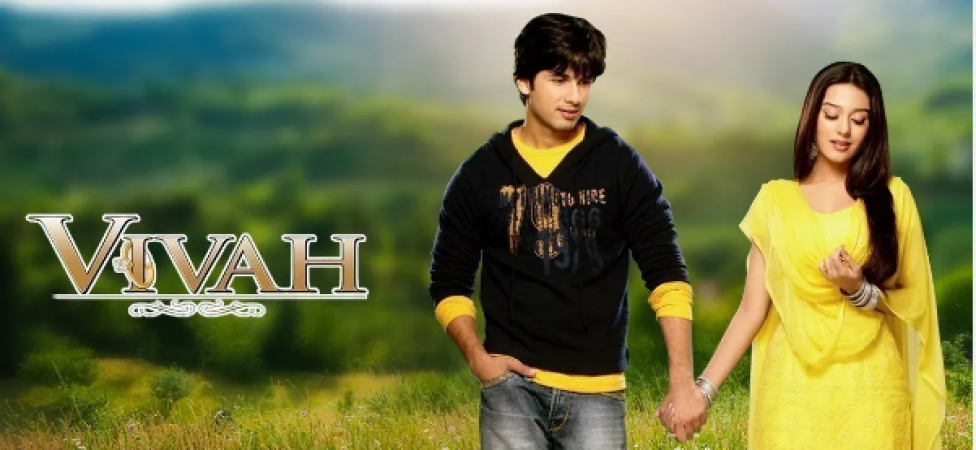
Bollywood, the well-known name for the Indian film industry, has long been a pioneer in the field of cinema. It has steadily changed over time, embracing new trends and technologies to reach a larger audience. The debut of "Vivah," directed by Sooraj R. Barjatya, as the first Indian movie to be released simultaneously in theaters and online, via the official website of the production company, was one such revolutionary moment in the history of Indian cinema. The industry's ability to adapt to the digital age was demonstrated by this ground-breaking decision, which marked a significant shift in the way Indian movies were distributed and watched.
For many years, Bollywood has been a major force in the film industry, churning out an enormous number of films each year that appeal to a wide range of tastes and preferences. A Bollywood film's release has historically followed a predetermined schedule. The movie would have its premiere in theaters all over India before gradually expanding its distribution to foreign markets. With the aid of this conventional business strategy, producers could profit from box office receipts and go on to sell movie rights for television, home video, and satellite.
But as the internet and other digital technologies proliferated, the global film industry started to undergo significant transformations. The film industry, including Bollywood, was not immune to this change.
Online movie streaming became a possibility as the internet started to reach more and more homes in India. With a huge selection of movies and TV shows available to viewers, streaming services like Netflix, Amazon Prime Video, and Disney+ Hotstar have become increasingly popular. A paradigm shift in how audiences viewed content, including movies, started as a result.
The conventional film distribution model started to feel the strain in this quickly evolving environment. A wider audience and increased revenue were two goals that filmmakers and production companies began to investigate. In light of this, Rajshri Productions, the production company behind "Vivah," made the bold decision to release the movie both in theaters and online at the same time.
In the romantic drama "Vivah," which was released in 2006, Shahid Kapoor and Amrita Rao played the lead characters. Given the success of previous Rajshri Productions like "Maine Pyar Kiya" and "Hum Aapke Hain Koun.," the movie, which was directed by Sooraj R. Barjatya, was eagerly anticipated by viewers.
Nothing short of a revolution was accomplished by the choice to release "Vivah" simultaneously in theaters and online. This historic release was made possible through a partnership between Rajshri Productions and IndiaFM (now Bollywood Hungama), led by the company's chairman Kamal Kumar Barjatya.
On the production company's official website, www.rajshri.com, the movie was made available for online streaming. The fact that Rajshri Productions made this decision at a time when Indian online streaming was still in its infancy speaks volumes about their forward-thinking mindset. They saw the potential of the internet as a distribution channel.
The concurrent release of "Vivah" had a number of important ramifications for the Indian film industry:
Expanded Audience Reach: By making the movie available online, "Vivah" was able to reach viewers who preferred to watch movies at home as well as those who could go to theaters. This increased audience was a game-changer for Bollywood because it created a new source of income.
Antipiracy Strategy: By releasing the movie online, the production company was able to successfully fight against piracy. The ability for viewers to legally watch the movie online lessened the incentive to look for pirated versions.
Global Accessibility: The boundaries of space are irrelevant on the internet. "Vivah" was accessible not only to Indian viewers but also to audiences abroad and the Indian diaspora. At the time, an Indian film had never been so widely accessible.
Rajshri Productions monetized their digital release by using a pay-per-view model for online streaming. In the following years, the Indian film industry would investigate new revenue models thanks to this tactic.
Digital Transformation's Forerunner: "Vivah" was a forerunner of the digital transformation that the Indian film industry would experience in the ensuing years. It established a standard for other producers and filmmakers to think about using digital platforms as a viable distribution channel.
The simultaneous release of "Vivah" was unprecedented, but it wasn't without its difficulties:
Internet Adoption: India's internet adoption was much lower in 2006 than it is now. The potential online audience was thus constrained. However, the action was pro-active and took into account the expansion of internet access in the nation.
Streaming Quality: In comparison to today, streaming quality and download speeds were less developed in 2006. Buffering and lower resolution were problems viewers encountered, which had an impact on their overall online viewing experience.
In the Indian context, monetizing online content was a relatively uncharted territory. It was difficult to persuade audiences to pay for online content because the pay-per-view model was a novel idea.
Being the first movie to embrace the idea of simultaneous release in theaters and online, "Vivah" will always hold a special place in the annals of Indian cinema. An important step was taken toward the digital transformation of the Indian film industry with this trailblazing move by Rajshri Productions. It helped fight piracy, opened the door for cutting-edge business models, and increased Bollywood's appeal to a global audience.
Even though the obstacles were clear, Rajshri Productions' vision and willingness to try out new distribution strategies paved the way for the digital revolution that still has an impact on the Indian film industry today. The movie "Vivah" will always be regarded as a trailblazer that dared to reject convention and embrace modern technology, forever altering how Indian movies are distributed and viewed.
Salman Khan's Role in Katrina Kaif's Journey to 'Namastey London'